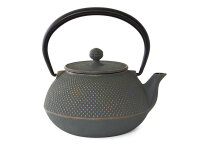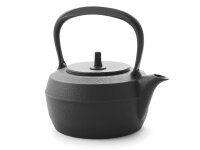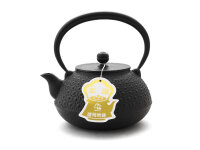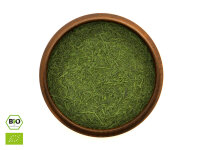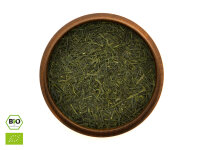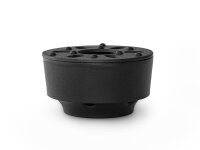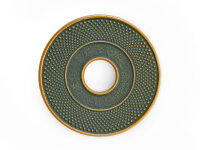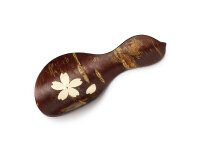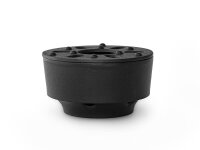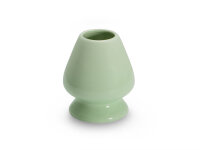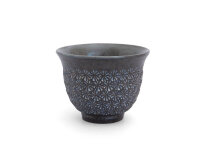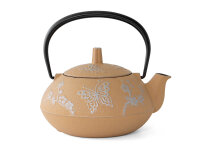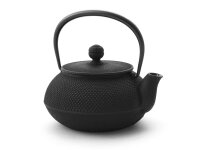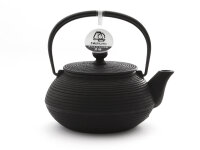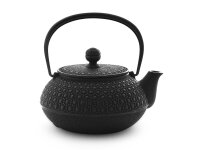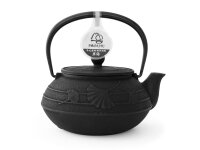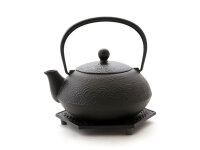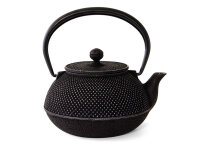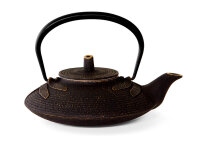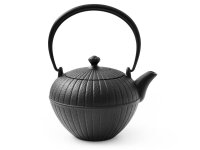"Teapot cast iron CHOCHO, bronze, 0.6 l"
Kyusu, the teapot, is not a tetsubin
It always happens that the cast iron Kyusu and the tetsubin, iron kettle, are confused with each other. A tetsubin is a water kettle made of cast iron. It is used to boil water, traditionally the tea water for the tea ceremony or daily green tea, and keep it warm. Still the tetsubin is popular and appreciated because it keeps the tea water warm, enhances the taste and also enriches it with valuable iron and minerals. The cast iron teapot, on the other hand, is not suitable for boiling water. The Kyusu is used to brew tea. Usually it is enameled inside, which slows down the release of iron and minerals that are present in the high-quality Japanese cast iron. However, even enamel is not perfectly leak-proof, so tea from a high-quality Iwachu teapot will have a richer flavor. Inferior teapots should be avoided by the tea connoisseur for taste and health reasons. Therefore, make sure that the teapot has the original stamp of Iwachu or other high quality manufacturers.
The best quality from the hands of experienced artisans
Only a few artisans in Japan make Nanbu tetsubin and Kyusu from cast iron. The working process, in order to achieve the desired very high quality, is very time-consuming and requires many years of experience from the masters. Elaborate clay molds are made by hand on the wheel and can usually be used for only 4 or 5 products. The world's most famous brand of handmade Nanbu tetsubin and Kyusu made of cast iron (tea pot) is Iwachu, Iwate Prefecture. Only natural materials are used as raw materials: tested iron ore and iron sand, Urushi lacquer, green tea and vinegar for the tetsubin, sealing and protecting the outer surfaces. Classic designs like the Arare motif but also picture motifs or very reduced designs are the rule. Colors are used rather rarely in the tetsubin, but Kyusu are also available in very different, modern colors.
Nambu Tekki (Nanbu Tekki), ancient and unsurpassed
Making nambu cast iron requires a very complex and complicated production process. This is also the reason that this manufacturing process is counted as a traditional handicraft - Nambu is only affordable by intensively trained artisans. Even a standard kettle requires nearly 70 steps. In Japan, it is assumed that training and experience of at least 15 years is necessary to become a high-quality manufacturer of cast iron products using the Nambu Tekki process. Only with about 40 years of experience will this craftsman attain the status of a master.
Original Iwachu
In Japan, it is considered an honor to have one's work imitated or copied. Unfortunately for the buyer, however, this can come with unpleasant \"side effects\" (shelf life, taste, value retention and health). Therefore, if you want to buy an original, pay attention to the labeling of the product. Iwachu imprints the company's emblem on the product. At Oryoki, we source our Iwachu Tetsubin and Kyusu directly from Iwachu in Japan, so you can be sure to get only originals from us.
All products are unique. Slight deviations from the picture are possible. Due to the handmade production, small irregularities in the shape and surface are possible. Iwachu products are only genuine with the original stamp on the product.
Use
Please follow enclosed care instructions. Always empty real cast iron teapots completely. Dry carefully, do not rub the outside.

